|
Cantata BWV 37
Wer da gläubet und getauft wird
Examples from the Score |
|
Mvt. 1 | Mvt. 3 | Mvt. 5 | Mvt. 6 |
| |
|
Mvt. 1 |
|
The opening bars of this mvt. immediately state three of the four important motifs. |
|
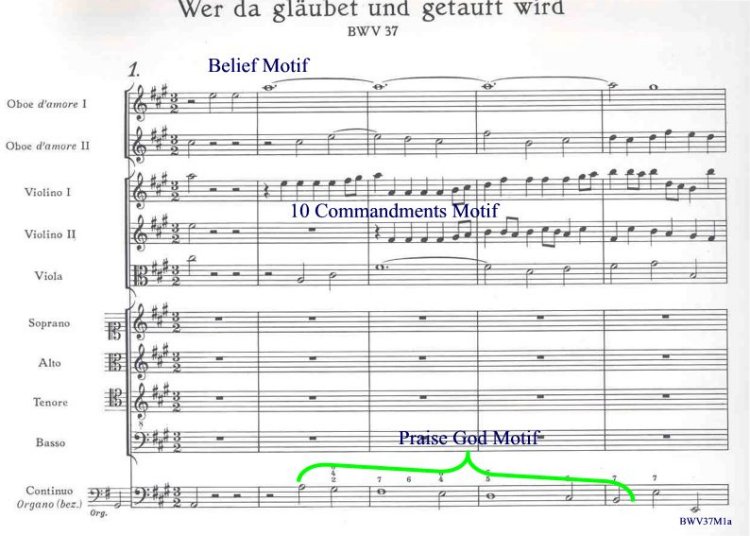
|
|
The Belief-motif gets this name from the long, held-note patterns which the vocal parts sing on the word "gläubet" ("believes"). The 10-Commandment-motif is derived from the incipet of the Luther hymn which looks like this: |
|

|
|
Bach also has some chorale preludes for organ. Here is the beginning of one. |
|

|
|
The basso continuo immediately introduces the last line of the hymn "Wie schön leuchtet der Morgenstern," here in a setting possibly from a lost cantata. In all of Bach's version of this hymn, he equalized the meter so that only quarter notes appear, but other older versions of this hymn had a combination of whole and half notes which might explain the rhythm he uses in this mvt. |
|
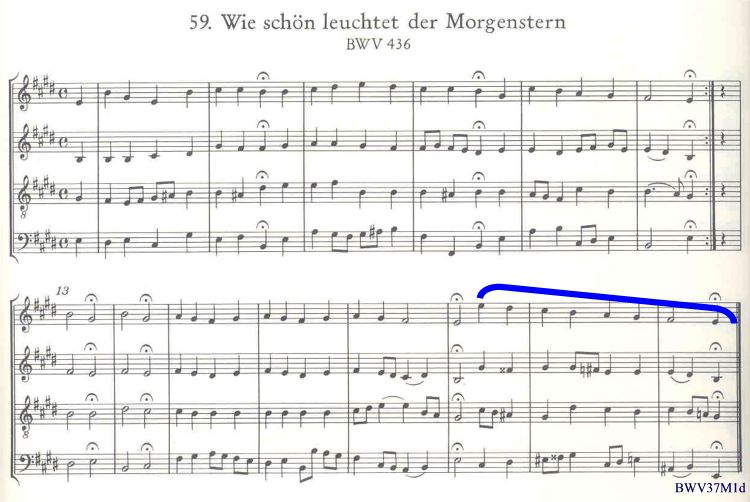
|
|
This sample from the score begins with measure 6 where the Baptism-of-Christ-motif occurs for the first time. |
|
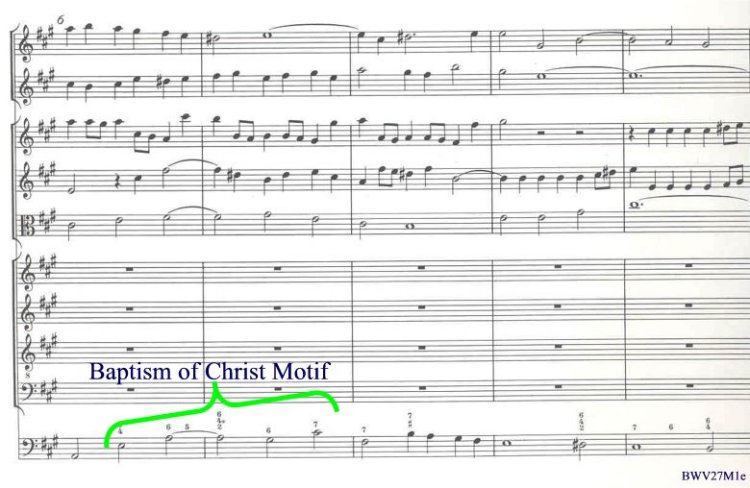
|
|
Here is a Bach setting of this Luther hymn referring directly to this baptism with the appropriate upward jumps on an interval of a fourth marked. |
|
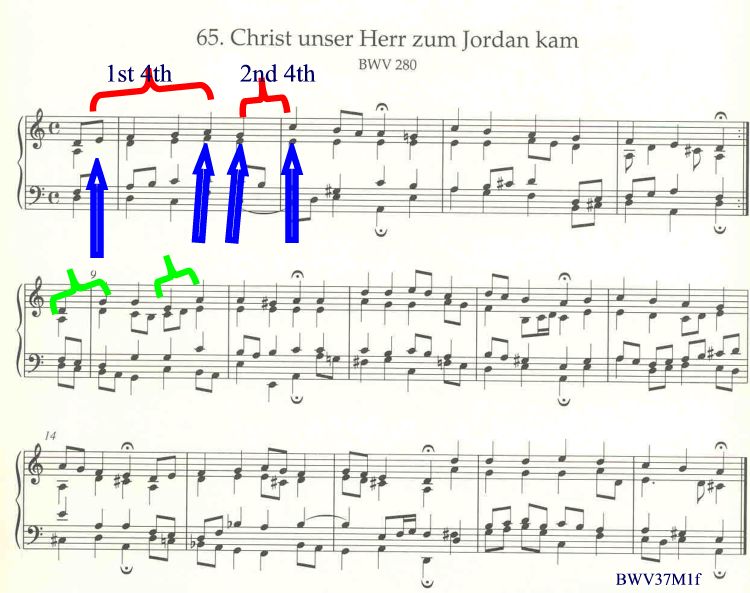
|
|
The 10-Commandment-motif in the continuo moves up at the end in contrast with the contrary motion figures in the strings and oboes. |
|
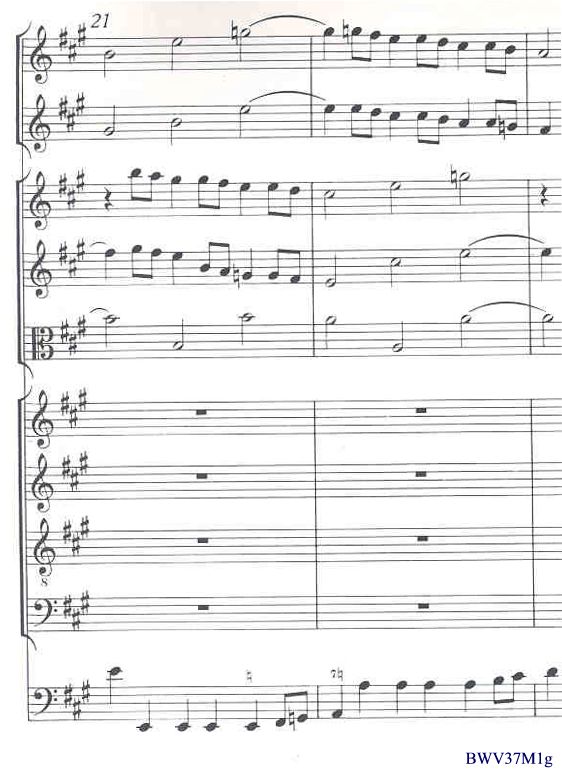
|
|
The final example highlights the problem area in the upper voice parts as they leave the held note and jump a seventh higher to a note that causes difficulty for many singers who fail to reduce volume on this note. |
|
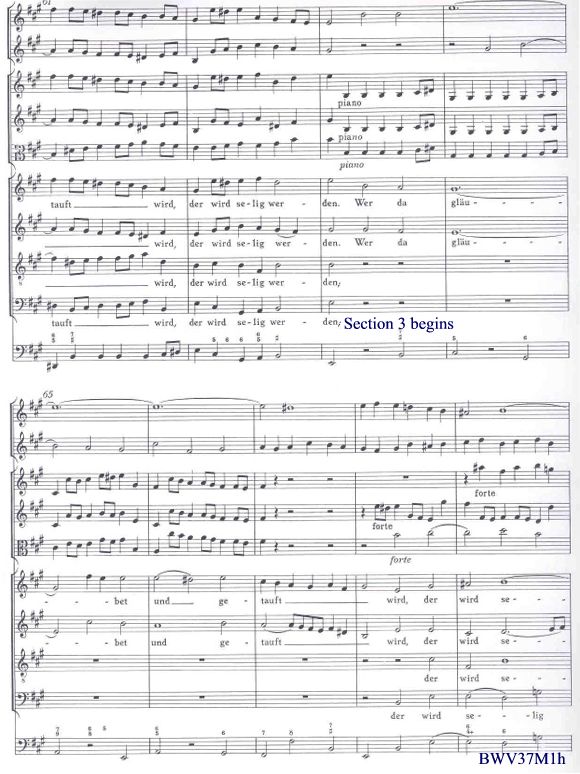
|
| |
|
Mvt. 3 |
|
The conclusion of this aria relates to the Praise-God-motif used in mvt. 1, but also illustrates the very florid treatment of this hymn melody. |
|

|
|
In this sample from another hymn using the same melody, notice the final words of each verse: "Und lobt Gott mit großem Schalle" ("and praise God with a great sound/noyse") |
|
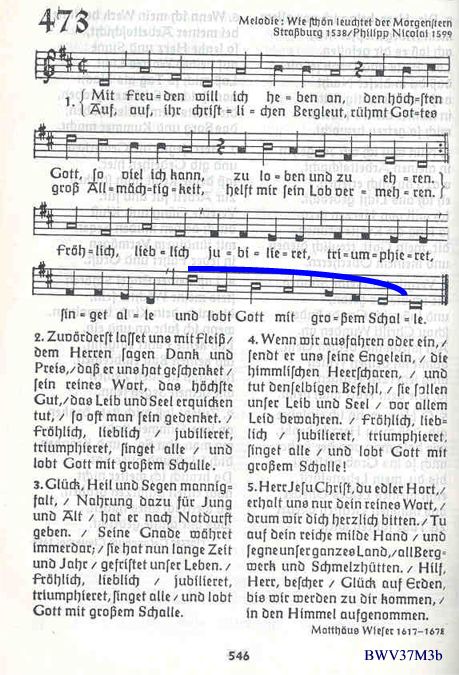
|
| |
|
Mvt. 5 |
|
The 1st example illustrates the Joy-rhythm and the fluttering or stirring of wings. |
|
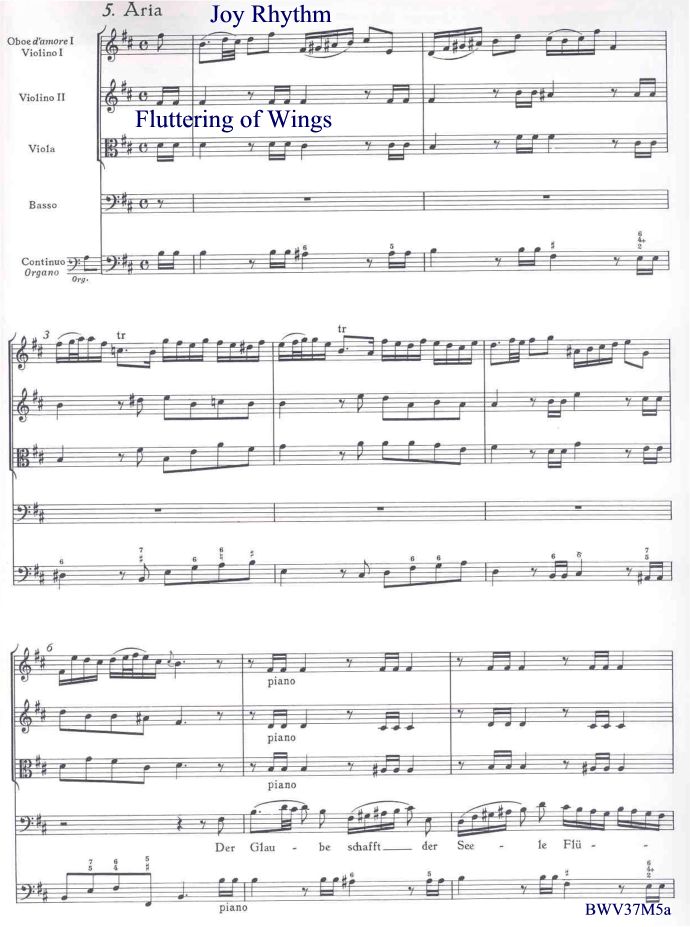
|
|
The 2nd example has a typical musical gesture, an upward sweep of notes on the word "Himmel" ("heaven"). |
|
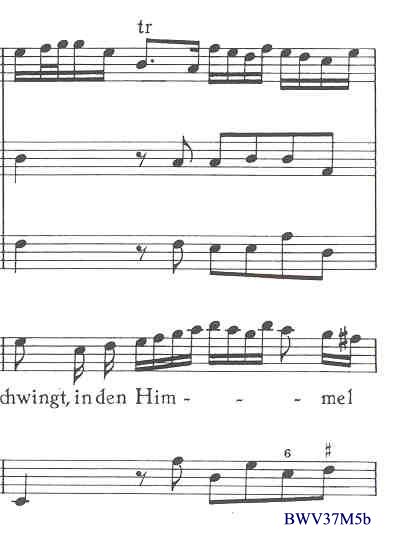
|
|
In the last example from this mvt., the Belief-motiv is stated by the voice, after which a cascade of notes on the word "getaufet" ("baptized") conjures up the image of a baptism, either the water falling from the head as the pastor performs the baptism, or the immersion of Jesus by John the Baptist. |
|
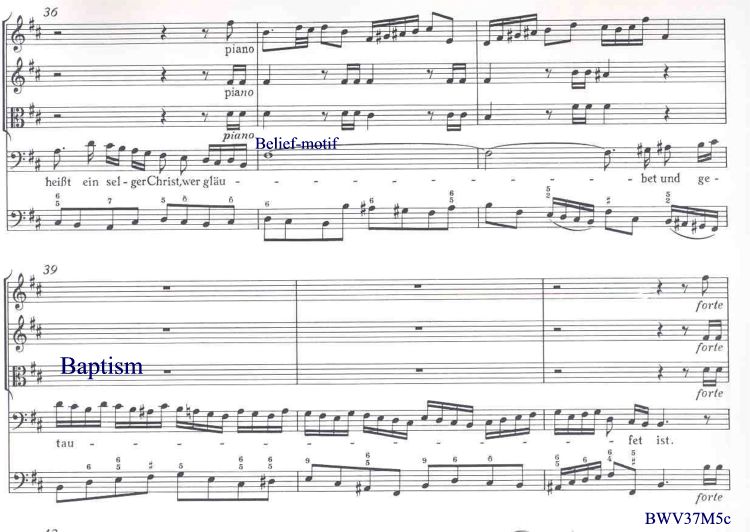
|
| |
|
Mvt. 6 |
|
Here we have an unusual twist in the harmonization of the words, "Sünd mir auch verzeihe" ("Also forgive my sins"). This once again proves that Bach's 4-part harmonizations are very frequently related directly to the verse being sung. Such harmonizations are not interchangeable with others, nor can a book of 4-part harmonizations be fully understood without reference to the text that underlies the harmonization as Schweitzer had already pointed out. |
|
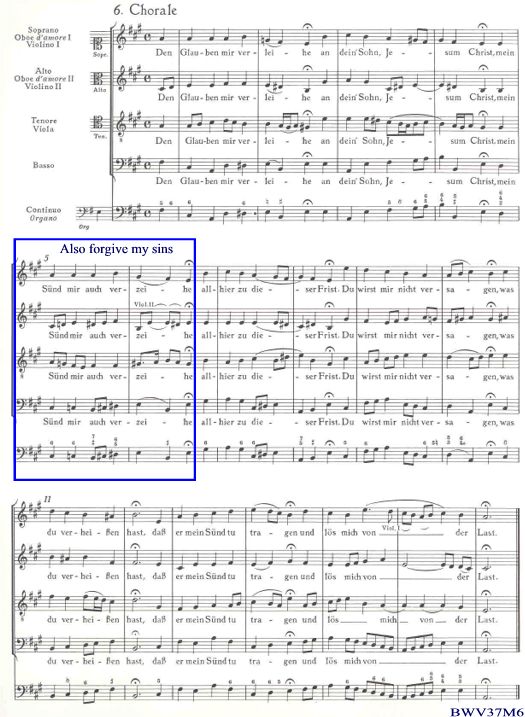
|
| |
|
Snippets taken from NBA I/12
Contributed by Thomas Braatz (June 1, 2001) |